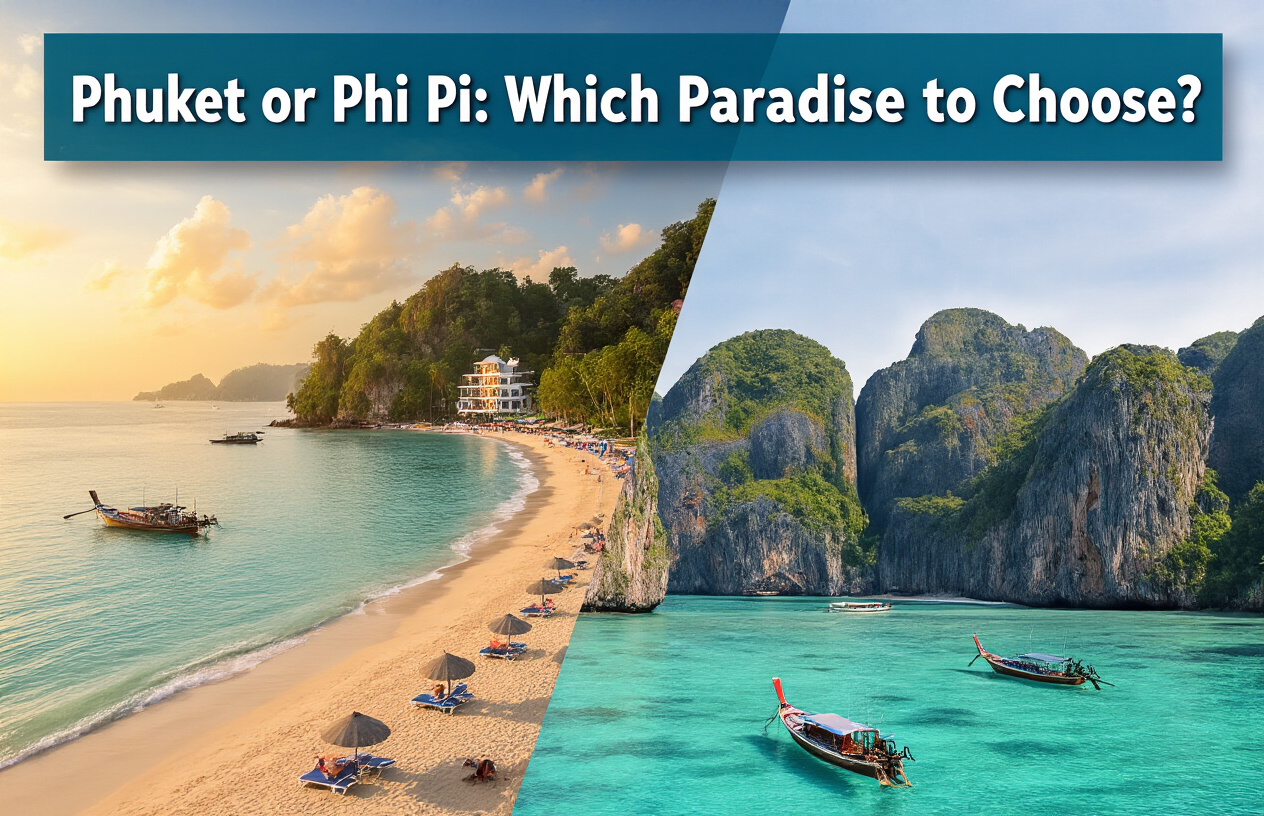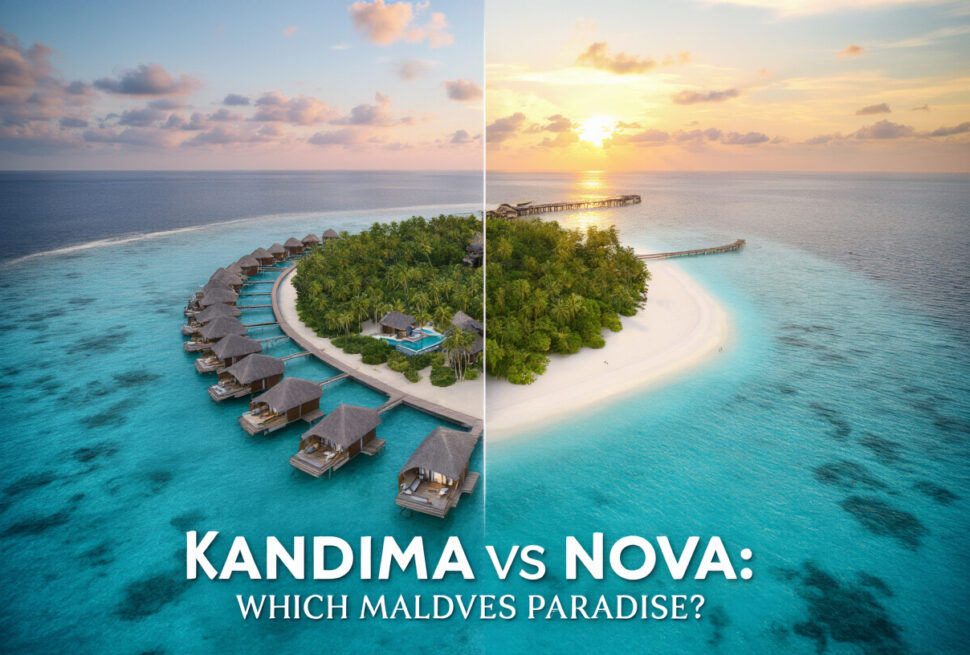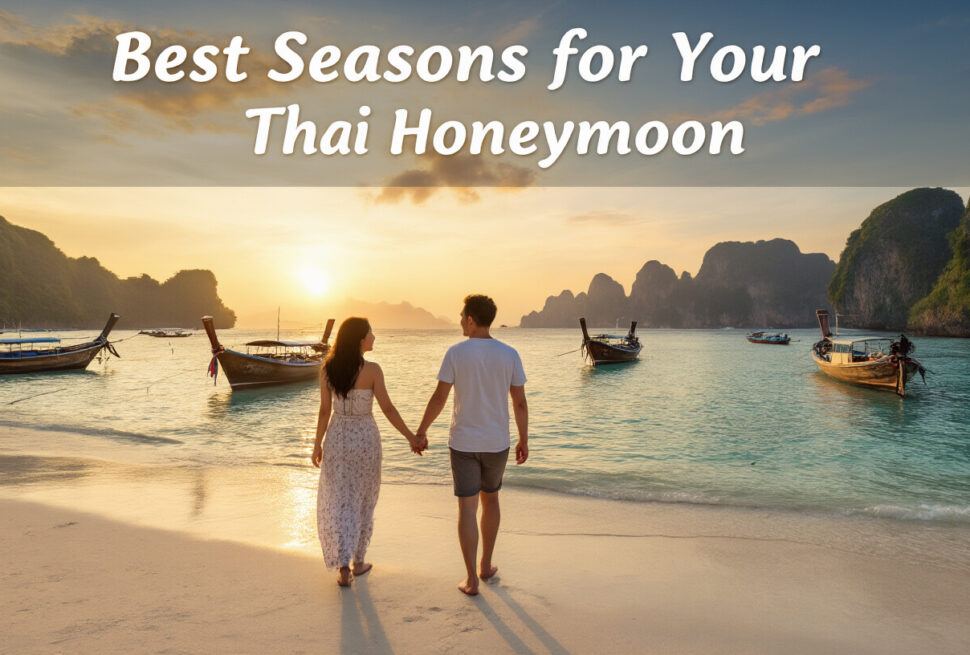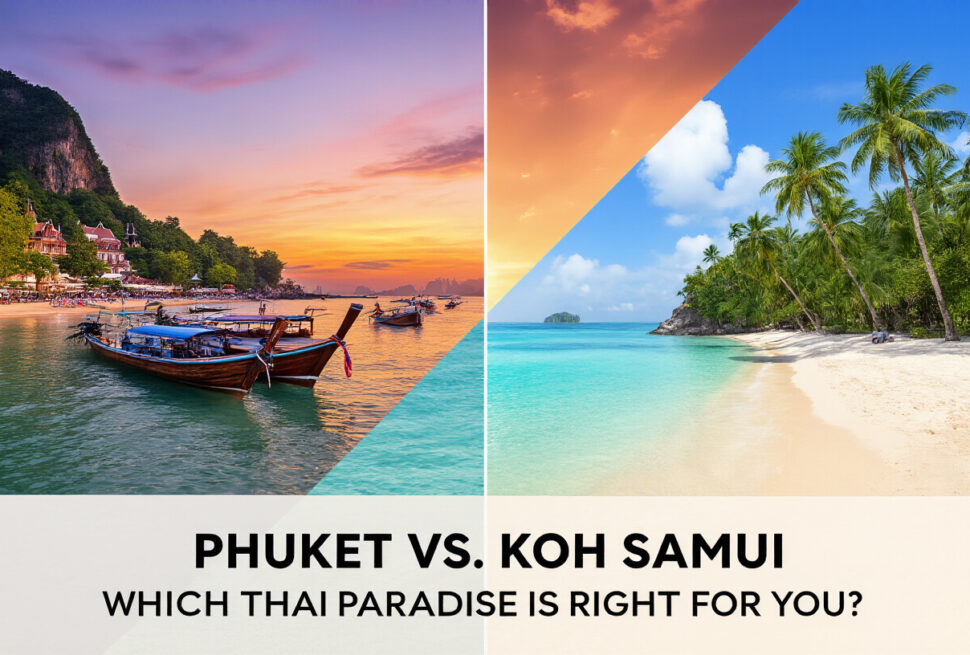You’re scrolling Instagram again, watching influencers pose on perfect Thai beaches, and suddenly you’re faced with the ultimate vacation dilemma: Phuket or Phi Phi Island?
I’ve been exactly where you are. After spending weeks in both destinations (and making some embarrassing tourist mistakes along the way), I’m breaking down the real differences between staying in Phuket or Phi Phi Island that those glossy travel brochures won’t tell you.
The truth? One of these destinations will drain your wallet and test your patience, while the other might just deliver that dream Thai experience you’ve been craving. The trick is knowing which is which for YOUR specific travel style.
But here’s what nobody talks about when comparing these two paradise spots…
Overview of Phuket vs Phi Phi Islands
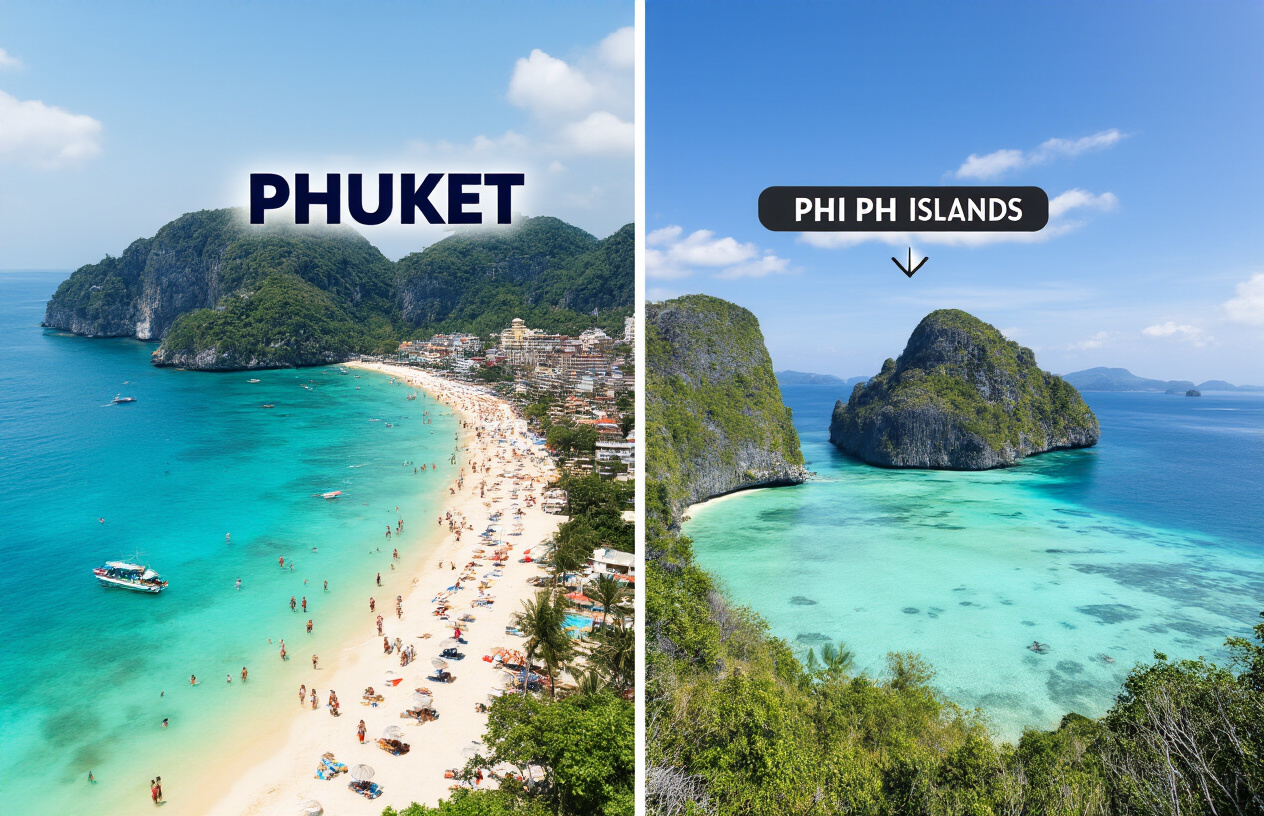
Key differences at a glance
Picking between Phuket and Phi Phi can be tricky if you’ve never been to either. Here’s the quick breakdown:
| Feature | Phuket | Phi Phi Islands |
|---|---|---|
| Size | Large island (576 km²) | Small archipelago (12.25 km²) |
| Development | Highly developed with cities | Less developed, more natural |
| Nightlife | Extensive (Patong, Kata) | Concentrated in Tonsai Village |
| Beaches | Many options, some crowded | Fewer but more pristine |
| Accommodation | Budget to luxury resorts | Mostly mid-range, fewer luxury options |
| Activities | Shopping malls, water parks, golf | Snorkeling, diving, rock climbing |
Phuket is where you go when you want options – from wild parties to family-friendly resorts. Phi Phi gives you that postcard paradise vibe with fewer crowds (except around Maya Bay).
Travel accessibility comparison
Getting to these spots couldn’t be more different:
Phuket is a breeze to reach. You can fly directly into Phuket International Airport from dozens of international destinations. Once there, taxis, buses, and rental cars make getting around simple.
Phi Phi requires more effort. You’ll need to:
- First get to either Phuket or Krabi
- Take a ferry (1.5-2 hours from Phuket, 1-1.5 hours from Krabi)
- Plan around ferry schedules (last boats usually depart by 3-4pm)
The extra effort to reach Phi Phi keeps crowds down but means you’re somewhat stranded if weather turns bad. No cars exist on Phi Phi – it’s all walking paths and longtail boats.
Best time to visit each destination
Both islands shine from November to April during dry season. But they’re not identical:
Phuket’s sweet spots:
- December-February: Perfect weather, but peak prices
- November and March: Slightly less crowded, still excellent weather
- April-May: Hot but manageable, pre-monsoon deals
Phi Phi’s ideal times:
- November-January: Clear water visibility for diving/snorkeling
- February-April: Calmest seas for boat trips
- October and May: Shoulder season bargains
Avoid both during peak monsoon (June-September) when ferries can be canceled and underwater visibility tanks.
Budget considerations for both locations
Your wallet will definitely feel the difference between these two destinations:
Phuket offers the full spectrum. You can rough it in $15/night hostels or splurge on $1,000/night pool villas. Street food runs $1-3 per meal, while beachfront restaurants might charge $30+.
Phi Phi hits your pocket harder across the board. The island import tax means:
- Accommodations start around $40/night for basic rooms
- Food costs 30-50% more than mainland prices
- Activities like boat tours run higher than equivalent Phuket options
- Water and essentials cost noticeably more
If you’re pinching pennies, Phuket lets you control costs better with its wider range of options. Phi Phi demands a premium for paradise.
Phuket’s Main Attractions
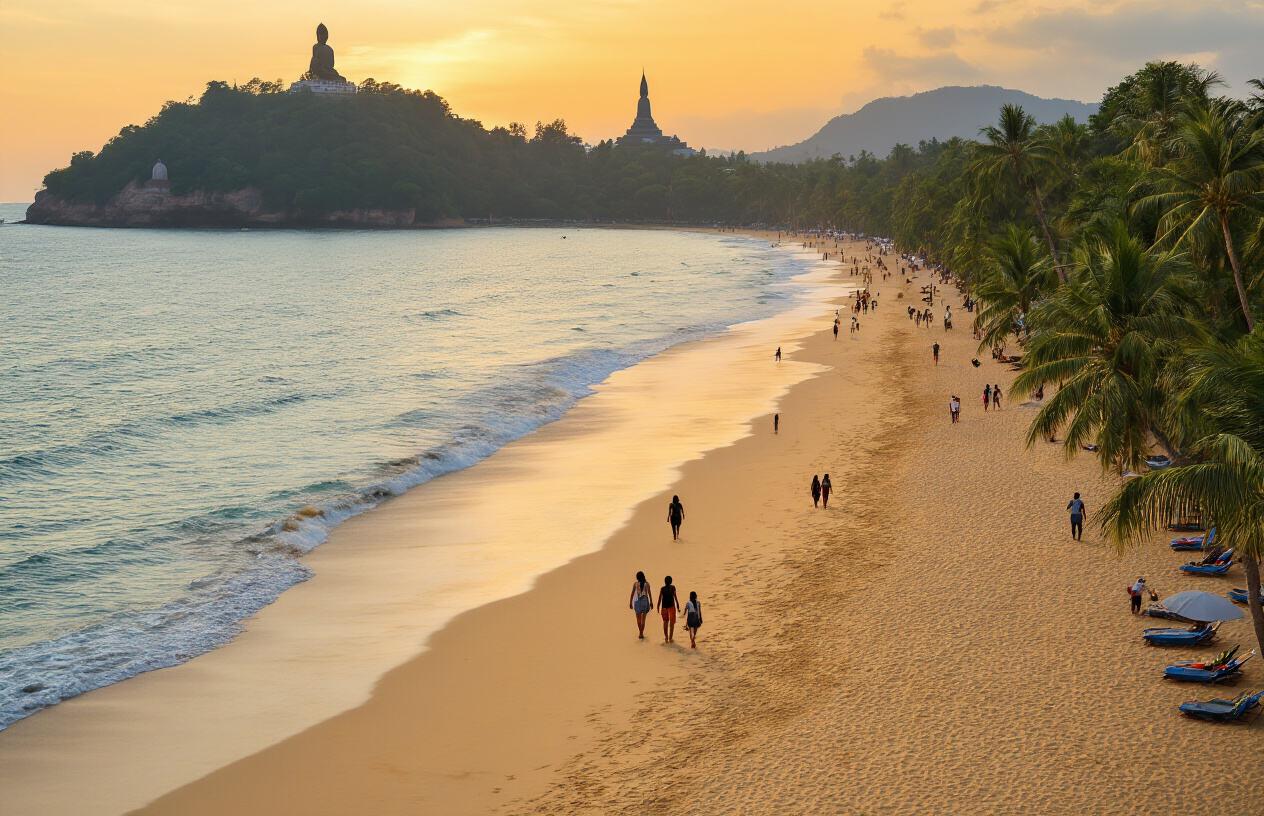
A. Top beaches and swimming spots
Phuket’s beaches are legendary, and for good reason. Patong Beach steals the spotlight with its 3km stretch of golden sand, but it’s also crowded as hell. Want something quieter? Freedom Beach is your spot – a hidden gem with powder-soft sand that’ll make you wonder why anyone bothers with Patong.
Kata and Karon beaches offer that perfect middle ground – gorgeous views without the crazy crowds. The water at these beaches is crystal clear during high season (November to April), making them perfect for swimming.
If you’re after something truly special, head to Nai Harn Beach in the south. Locals love this place, which tells you everything you need to know. The swimming conditions are excellent, and the surrounding scenery will have your Instagram followers green with envy.
For families, Bang Tao Beach offers shallow, calm waters. Surin Beach is where the fancy folk hang out – think beach clubs and umbrella service. And don’t miss Kamala Beach if you want that authentic Thai beach town vibe without all the tourist trappings.
B. Vibrant nightlife and entertainment options
Phuket’s nightlife is off the charts. Bangla Road in Patong is the epicenter – a neon-lit street that transforms after sunset into a playground for adults. It’s loud, it’s brash, and it’s an experience you won’t forget.
Beach clubs dot the coastline, offering more sophisticated vibes. Catch Beach Club on Bangtao Beach lets you sip cocktails with your toes in the sand, while Café del Mar brings Ibiza-style parties to Kamala Beach.
For live music fans, there’s plenty on offer. Red Hot Bar in Patong features Thai bands covering rock classics, while Rockin’ Angels in Phuket Town showcases local talent.
Cabaret shows provide family-friendly entertainment with spectacular costumes and performances. Simon Cabaret is the most famous, but there are smaller shows throughout the island that won’t disappoint.
Want something different? Phuket FantaSea combines Thai culture with Vegas-style entertainment. It’s cheesy but fun. Or check out the boxing matches at Patong Boxing Stadium for some authentic Muay Thai action.
C. Family-friendly activities and attractions
Traveling with the kids? Phuket’s got you covered. Splash Jungle Water Park near Mai Khao Beach has slides and pools for all ages. The little ones will go crazy for it, especially on those hot Thai afternoons.
Animal lovers should hit up the Phuket Elephant Sanctuary – it’s ethical and educational. The kids can observe rescued elephants in a natural setting without any riding or exploitation.
Trick Eye Museum in Phuket Town is perfect for rainy days. The 3D illusions make for hilarious family photos that’ll become instant favorites.
For something educational, try the Phuket Aquarium at Cape Panwa. It’s smaller than some international aquariums but showcases local marine life brilliantly.
Don’t miss Surf House in Kata Beach where kids (and adults) can try flowriding – surfing on an artificial wave. Even beginners can have a blast, and there’s a restaurant where parents can chill while watching the action.
Adventure mini-golf, go-karting, and zip-lining adventures round out the family offerings. Trust me, you won’t hear “I’m bored” from the backseat in Phuket.
D. Luxury resorts and accommodation options
Phuket knows luxury. The island’s high-end resorts are next level. Amanpuri, the original Aman resort, still sets the standard with its private pool pavilions and impeccable service.
The Trisara offers pool villas cascading down a private bay. Their seafood restaurant, PRU, is the island’s only Michelin-starred venue. Yeah, it’s that fancy.
For families wanting luxury, the Anantara Layan provides kids’ clubs and activities while parents indulge in spa treatments or private dining experiences.
Sri Panwa perched on Cape Panwa offers jaw-dropping views from infinity pools that seem to merge with the Andaman Sea. The resort’s Baba Nest rooftop bar regularly makes “world’s best bars” lists.
Rosewood Phuket combines sustainability with luxury in a way that doesn’t feel forced. Their wellness programs are some of the best in Thailand.
Not into mega-resorts? Boutique options like The Slate draw inspiration from Phuket’s tin mining history with industrial-chic design elements that stand out from the crowd.
Most luxury resorts offer private villa options with dedicated staff, meaning you can have all the amenities without seeing another guest if that’s your vibe.
E. Shopping and dining experiences
Phuket’s food scene is ridiculous. From street food to fine dining, your taste buds are in for a treat. Street markets like the Sunday Walking Street in Phuket Town serve up authentic Thai flavors at prices that’ll make you do a double-take.
For seafood, head to Rawai. The fish market lets you pick your catch, then have it cooked at adjacent restaurants. It doesn’t get fresher than that.
Jungceylon Shopping Mall in Patong houses international brands alongside Thai boutiques. Perfect for those days when the sun’s too intense.
Central Festival in Phuket Town is where locals shop. It’s air-conditioned heaven with everything from electronics to designer fashion.
Night markets are where the real action is. Malin Plaza Patong combines shopping with an incredible food court. Grab some mango sticky rice while browsing for souvenirs.
Fine dining options abound. Blue Elephant serves royal Thai cuisine in a colonial mansion. Acqua offers Italian fine dining with Mediterranean views that’ll transport you to Capri.
Don’t miss the local food scene in Old Phuket Town. The Sino-Portuguese architecture provides a stunning backdrop for cafes serving Phuketian specialties like Mee Hokkien (stir-fried noodles) and Moo Hong (braised pork belly).
F. How long should I stay in Phuket?
Five days minimum. Seriously. Anything less and you’re just scratching the surface.
A week is ideal for first-timers. This gives you enough time to hit the major beaches, explore Old Phuket Town, enjoy some nightlife, and take a day trip or two.
If you’re a beach bum, ten days won’t feel excessive. Each beach has its own personality, and you’ll want time to find your favorite.
Adventure seekers should allow extra time for diving, hiking, and exploring the national parks. The underwater world around Phuket deserves at least two days of your itinerary.
For families, a 7-10 day stay works best. Kids need downtime between activities, and rushing around with little ones in tropical heat is nobody’s idea of a vacation.
Luxury travelers staying in high-end resorts might want longer stays. When you’re dropping serious cash on accommodations, you’ll want to actually enjoy the facilities rather than constantly being out sightseeing.
Remember that Phuket can also serve as a base for exploring nearby destinations like Phang Nga Bay, so factor in day trips when planning your stay length.
Phi Phi Islands’ Unique Appeal
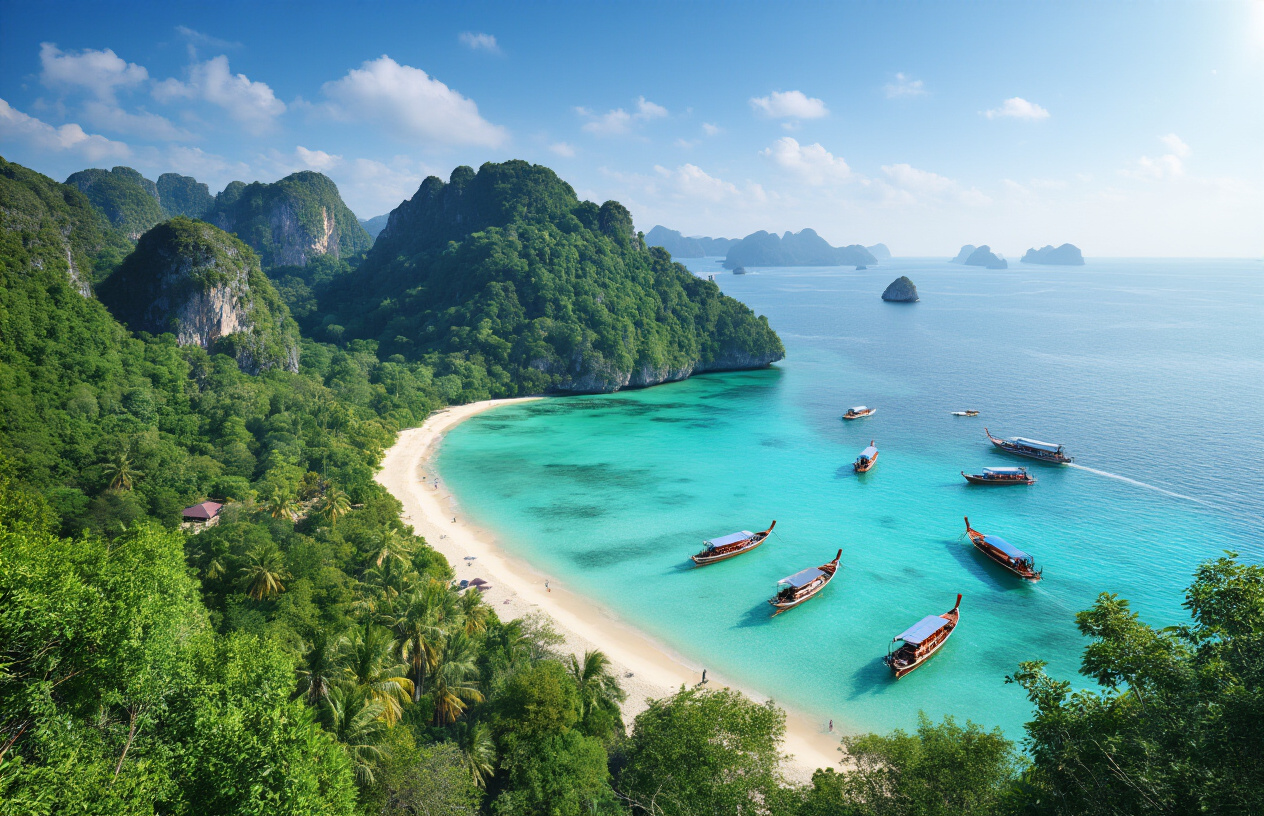
A. Stunning natural landscapes and viewpoints
The Phi Phi Islands are basically Mother Nature showing off. Seriously. The moment your boat approaches these limestone giants jutting dramatically from turquoise waters, you’ll understand why people obsess over this place.
Viewpoint 1 is the classic postcard shot everyone chases – that iconic view overlooking the two bays of Tonsai and Loh Dalum. The 20-30 minute uphill hike gets sweaty, but it’s worth every drop. Go early morning or for sunset to dodge both the crowds and midday heat.
For the more adventurous, Viewpoint 3 takes you higher for an even more spectacular panorama. The trail’s a bit rougher, but you’ll get bragging rights and photos that’ll make your Instagram followers hate you (in a good way).
B. World-class snorkeling and diving sites
Phi Phi’s underwater world is just as impressive as what’s above. The crystal-clear waters host some of Thailand’s best marine ecosystems.
Shark Point lives up to its name – blacktip reef sharks cruise these waters regularly. Don’t panic! They’re more scared of you than you are of them.
Long Beach and Monkey Bay offer colorful coral gardens teeming with tropical fish that’ll swim right up to you. Even if you’ve never snorkeled before, this is your chance to feel like a marine biologist for a day.
For certified divers, Bida Nok and Bida Nai deliver spectacular wall dives, caves, and marine life that’ll have you extending your stay.
C. The famous Maya Bay and filming locations
Yes, this is THE beach from “The Beach.” Maya Bay became world-famous after Leonardo DiCaprio’s 2000 film, and it’s easy to see why directors fell in love with it.
After being closed for ecological recovery, Maya Bay reopened with strict visitor limits. The result? It’s actually possible to experience this paradise without shoulder-to-shoulder crowds.
The emerald waters against white sand surrounded by towering cliffs create a natural cathedral that feels almost unreal. Just remember, swimming is restricted to designated areas to protect the recovering coral.
Beyond Maya, Viking Cave and Pileh Lagoon have starred in countless films and should definitely be on your island-hopping itinerary.
D. Relaxed island atmosphere
Phi Phi hits that sweet spot between developed and primitive. There are no cars on the island – just narrow walkways connecting everything.
Days flow at their own pace here. Breakfast might stretch into lunch as you watch longtail boats cruise by. Evenings bring fire shows on the beach and barefoot dining on fresh seafood.
Unlike Phuket’s sometimes hectic energy, Phi Phi lets you truly disconnect. Most accommodations don’t even have TVs – and trust me, you won’t miss them with those views outside your window.
E. How long should I stay on Phi Phi Island?
Two nights is the absolute minimum to experience Phi Phi properly. Many travelers plan a quick overnight but end up extending their stay after falling for the island’s charms.
Three to four nights hits the sweet spot – enough time for the main attractions plus those magical moments of discovery when you wander down an unmarked path or find a secluded beach.
If you’re a diver or really need to decompress, a week isn’t too long. The island has different rhythms from day to day, and longer stays let you sync with its natural flow.
Just remember that everything on Phi Phi costs more than mainland Thailand – accommodations, food, activities – so budget accordingly for longer stays.
Accommodation Comparison
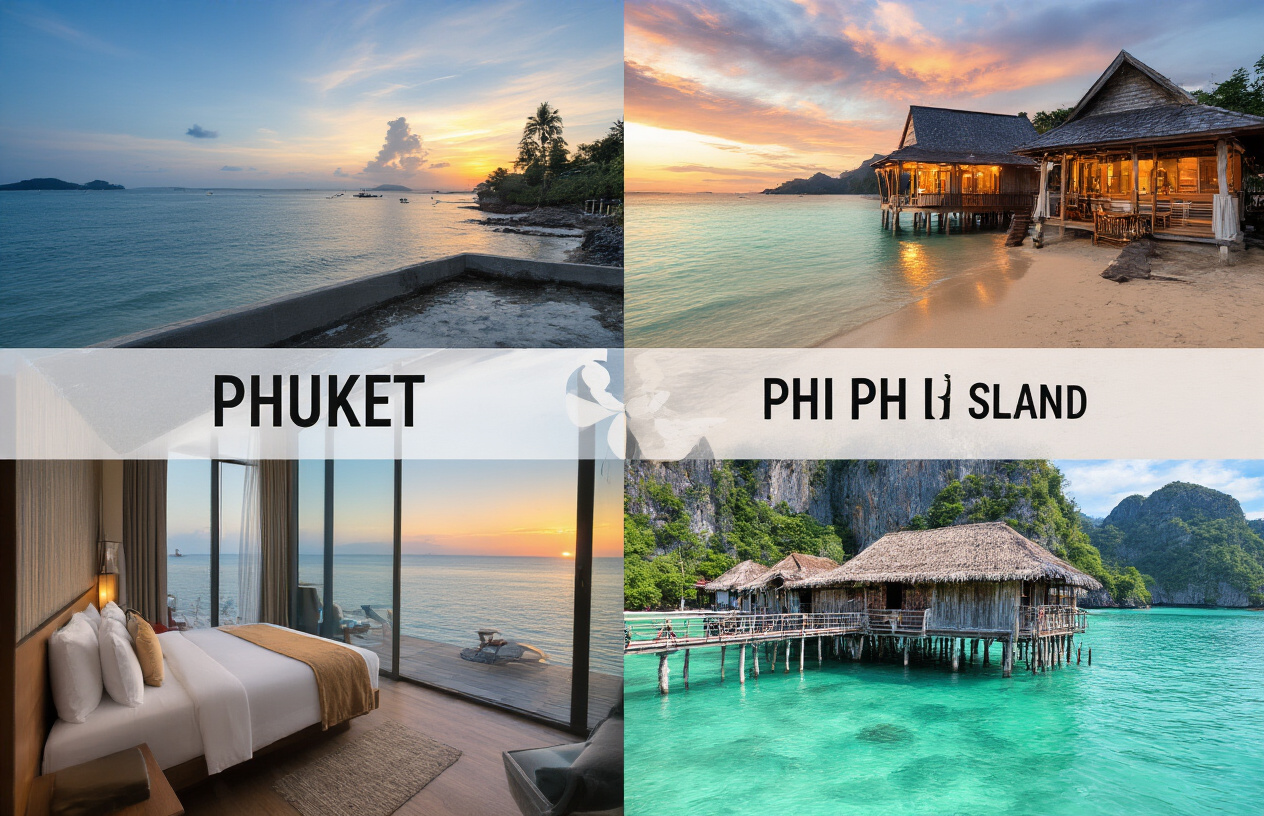
Luxury options in both destinations
Ever wondered where to drop your suitcase for that dream Thai getaway? The choice between Phuket and Phi Phi hits different when you’re talking luxury digs.
Phuket absolutely crushes it with 5-star international chains. Think Banyan Tree, Amanpuri, and Six Senses—places where private infinity pools and personal butlers are just the starting point. These resorts are sprawling affairs, often with private beach access and multiple restaurants on-site.
Phi Phi, though? It’s luxury with a twist. The high-end options here like Zeavola Resort and Saii Phi Phi Island Village Beach Resort offer a barefoot luxury vibe. You’re paying premium prices for stunning beachfront villas and that unmistakable feeling of seclusion.
Mid-range stays and their amenities
Your wallet isn’t crying but you still want something nice? I got you.
In Phuket, mid-range means serious bang for your buck. Most hotels in the $60-120 range come with pools, decent breakfast spreads, and often free shuttle services to nearby beaches. Places like the Novotel or Holiday Inn tick all the boxes without making you sell a kidney.
Phi Phi’s mid-range options have that special something—location. Many are right on the beach or perched on hillsides with killer views. The trade-off? Fewer amenities compared to Phuket. AC, hot water, and maybe a small pool is what you’re looking at.
Budget-friendly accommodations
Traveling on a shoestring? No problem.
Phuket’s budget scene is concentrated in areas like Patong and Phuket Town. Expect to pay $15-30 for basic guesthouses or hostels. Many include fans instead of AC, shared bathrooms, and simple furnishings—but they’re clean and central.
Phi Phi takes budget to new heights (or lows in price). Backpacker haunts cluster around Tonsai Village, where $10-25 gets you a bed. The catch? During peak season, these fill up faster than free beer at happy hour, and quality can be hit or miss.
Food and Dining Experiences
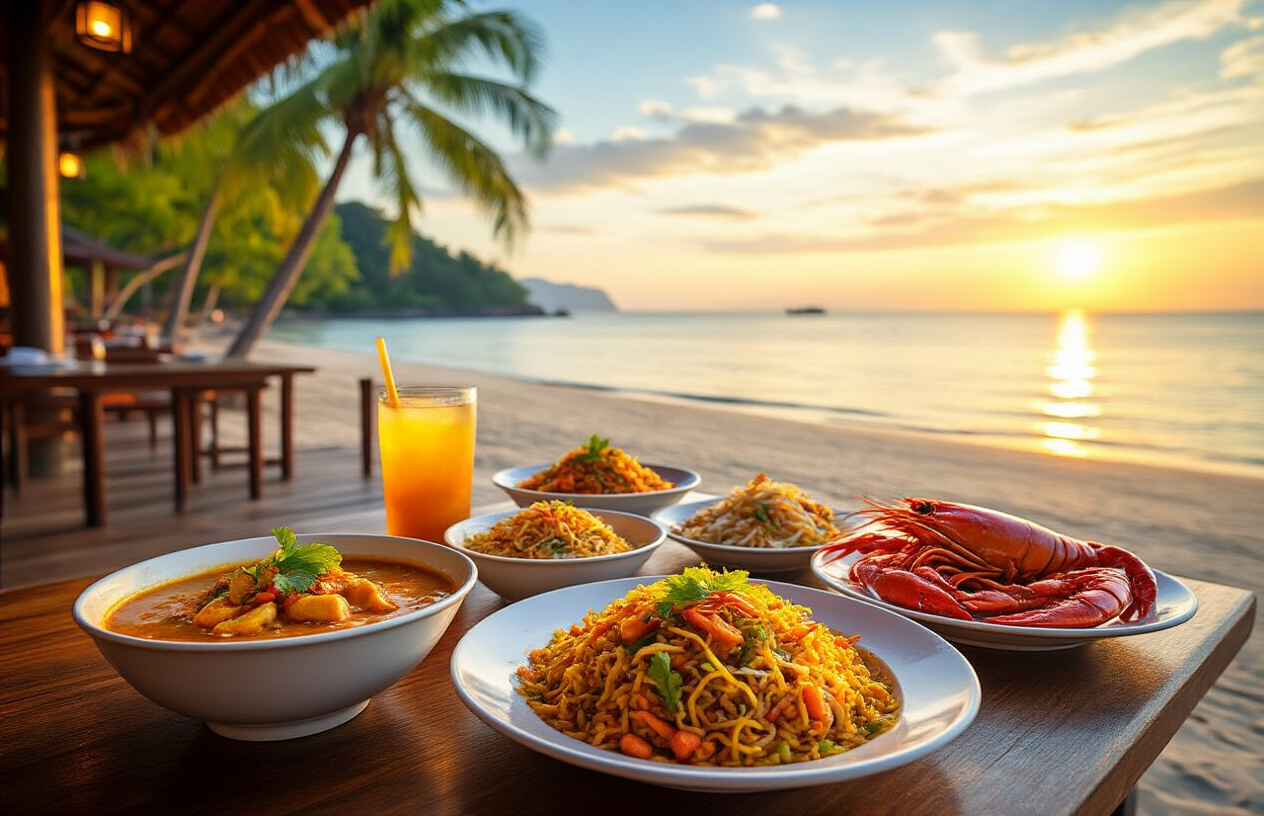
Local Thai cuisine options
Phuket and Phi Phi offer completely different food scenes. In Phuket, you’ll find hundreds of local restaurants serving authentic southern Thai cuisine. The spicy, aromatic curries hit differently here – trust me on that. Patong and Phuket Town are packed with family-run spots where grandma’s still in the kitchen making tom yum goong that’ll make your taste buds dance.
Phi Phi, being smaller, has fewer options but often more intimate experiences. The seafood is literally caught that morning. Many beachfront restaurants let you pick your fish from ice displays before they grill it with lemongrass and lime leaves. Nothing beats eating freshly grilled fish with your toes in the sand.
International dining choices
Phuket wins hands down for international variety. From high-end Italian in Bangtao to authentic Korean BBQ joints in Patong, you’re covered. The island even boasts Michelin-recommended restaurants and celebrity chef outposts.
Phi Phi keeps it simpler with mainly tourist-friendly spots serving decent pizza, burgers, and pasta. Nothing fancy, but good enough when you need a break from Thai food.
Street food vs. resort dining
The street food in Phuket is next level. Night markets in Phuket Town offer everything from mango sticky rice to sizzling satay for pennies. You’ll eat better for 100 baht on the street than 1000 baht in some hotels.
Phi Phi’s street food scene is limited to a few stalls near Tonsai village. Resort dining dominates here, with beachfront BBQs being the highlight.
Unique culinary experiences at each location
Phuket shines with its cooking classes. Learning to pound curry paste in a traditional Thai kitchen is worth every minute. The Sunday Walking Street market in Old Town combines amazing food with local culture.
Phi Phi’s signature experience? The floating seafood restaurants near Viking Cave. Imagine dining on a wooden platform over crystal clear water while watching fish swim below. Sunset dining on Phi Phi’s western beaches also offers views you’ll remember forever.
Activities and Excursions
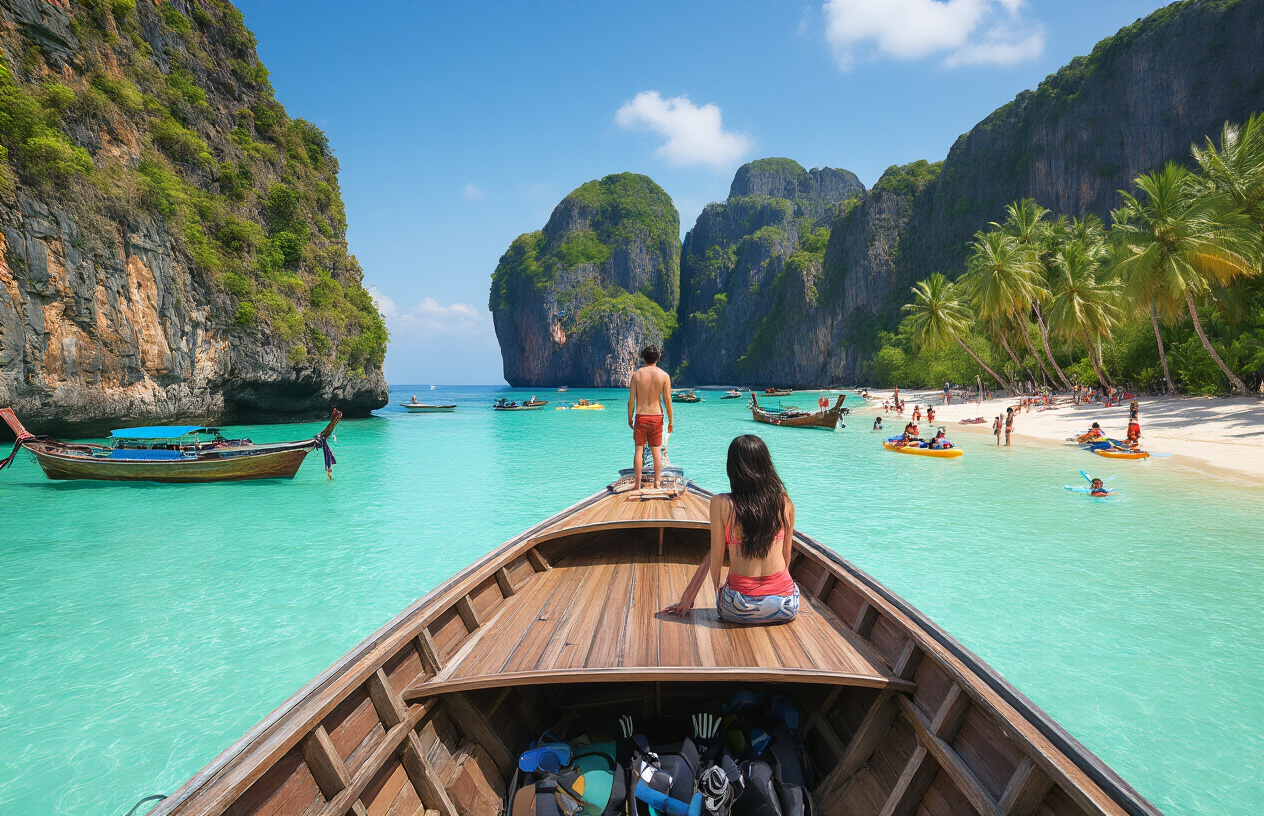
Water sports and marine adventures
Phuket and Phi Phi offer totally different vibes when it comes to getting wet.
In Phuket, you’ve got options galore. Patong and Kata beaches are buzzing with jet skis, parasailing, and banana boats. Snorkeling spots like Freedom Beach and Ao Sane give you close encounters with colorful fish without the crowds. For surfers, Kata Beach delivers decent waves from May to October—nothing world-class, but fun enough for most levels.
Phi Phi, though? It’s underwater heaven. The crystal water visibility is insane—sometimes 20+ meters! Maya Bay (yeah, from “The Beach” movie) recently reopened with strict visitor limits. The snorkeling around Monkey Beach and Bamboo Island will blow your mind with those neon corals and fish practically posing for your GoPro.
Day trips and island hopping possibilities
Staying in Phuket means you’re perfectly positioned for island-hopping adventures. You can:
- Zip over to James Bond Island in Phang Nga Bay
- Hit up the Similan Islands for world-class diving (seasonal)
- Explore Racha and Coral Islands on easy day trips
From Phi Phi, your options are more limited but incredibly scenic:
- Take longtail boats to nearby uninhabited islands
- Visit Mosquito Island and Bamboo Island
- Do a sunset cruise around the smaller Phi Phi islands
Cultural experiences and local attractions
Phuket wins this round easily. The Old Town’s Sino-Portuguese architecture is straight-up gorgeous, with those colorful shophouses and hidden cafés. Big Buddha offers incredible views, while Wat Chalong gives you that authentic temple experience. Night markets in Phuket Town let you sample local foods while hunting for souvenirs.
Phi Phi? Cultural attractions are basically non-existent. There are no temples, museums, or historical sites to speak of. The “culture” here is beach bars and fire shows. Not knocking it—the vibe is fantastic—but don’t expect much beyond the party-beach atmosphere.
Hiking and nature exploration opportunities
Phuket surprises many with its decent hiking options. Bang Pae Waterfall trek takes you through genuine rainforest with a chance to spot wildlife. The Khao Phra Thaeo National Park offers proper jungle hikes where you might catch gibbons swinging through trees.
Phi Phi’s iconic viewpoint hike is a must—a sweaty 20-30 minute climb rewarded with that postcard view of the twin bays. Beyond that, there’s the less-visited Phi Phi Viewpoint 3, which requires a more challenging ascent but delivers even more spectacular panoramas. You can also hike to the eastern beaches for some relative solitude.
Practical Travel Considerations
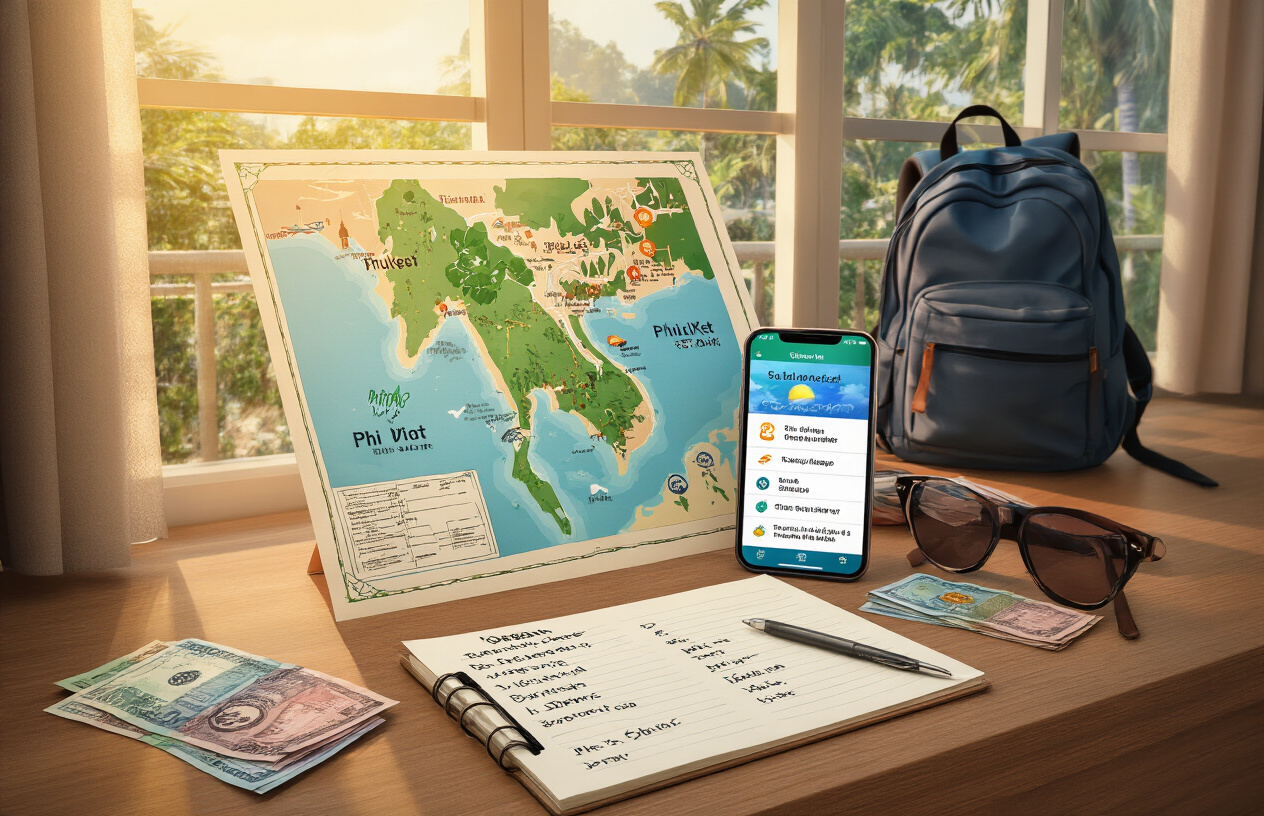
Transportation between islands
Getting between Phuket and Phi Phi isn’t rocket science, but it does require a bit of planning. Your main options are ferries and speedboats.
Ferries run regularly from Phuket’s Rassada Pier to Tonsai Pier on Phi Phi, taking about 2 hours each way. They’re cheaper (around 350-600 THB) but slower.
Speedboats get you there in 45 minutes but cost about twice as much. Worth it if you’re time-strapped or hate long boat rides.
In high season (November-April), boats run frequently – up to 6 times daily. During monsoon season (May-October), services can be limited or canceled when waves get rough.
Pro tip: Book your return ticket in advance during peak season. Nobody wants to be stranded because boats are full.
Best duration of stay for each location
Phuket deserves 4-7 days minimum. It’s huge and has tons to explore – from beaches to nightlife to cultural sights.
Phi Phi is smaller and works well as a 2-4 day trip. Anything longer and you might get island fever unless you’re specifically there to dive or completely unwind.
First-timers often make the mistake of rushing Phi Phi as a day trip. Don’t. You’ll spend most of your time on boats and miss the magic of Phi Phi after day-trippers leave.
Combined itinerary possibilities
The perfect combo? Start with 4-5 days in Phuket to explore the bigger attractions and adjust to Thailand. Then hop over to Phi Phi for 2-3 days of island bliss.
Another solid plan: Use Phuket as your base and do an overnight trip to Phi Phi. This works if you’re short on time but still want that postcard paradise experience.
For those with more time, consider adding Krabi or Koh Lanta to create a multi-island adventure. The Andaman Sea is your oyster!
Seasonal considerations and weather impacts
High season (November-April) brings perfect weather – sunny days, calm seas, and minimal rain. But also crowds and peak prices.
Shoulder seasons (May and October) offer great value with fewer tourists and decent weather, though with occasional rain showers.
Monsoon season (June-September) means lower prices and emptier beaches, but also rough seas and daily downpours. Some boat services reduce frequency, and certain activities might be unavailable.
February-March typically offers the best balance of good weather and manageable crowds.
Safety and health information
Both destinations are generally safe, but take normal precautions:
- Watch your belongings on beaches
- Drink bottled water
- Use reputable tour operators for excursions
Phi Phi has more limited medical facilities – just small clinics for minor issues. Phuket has international-standard hospitals, making it better for families or those with health concerns.
Water safety matters in both places. Respect red flags on beaches and currents around Phi Phi can be strong in certain areas. If renting a motorbike in Phuket, wear a helmet – roads there can be chaotic.
Both islands have ATMs, but Phi Phi’s can run out of cash in peak season, so bring enough baht.
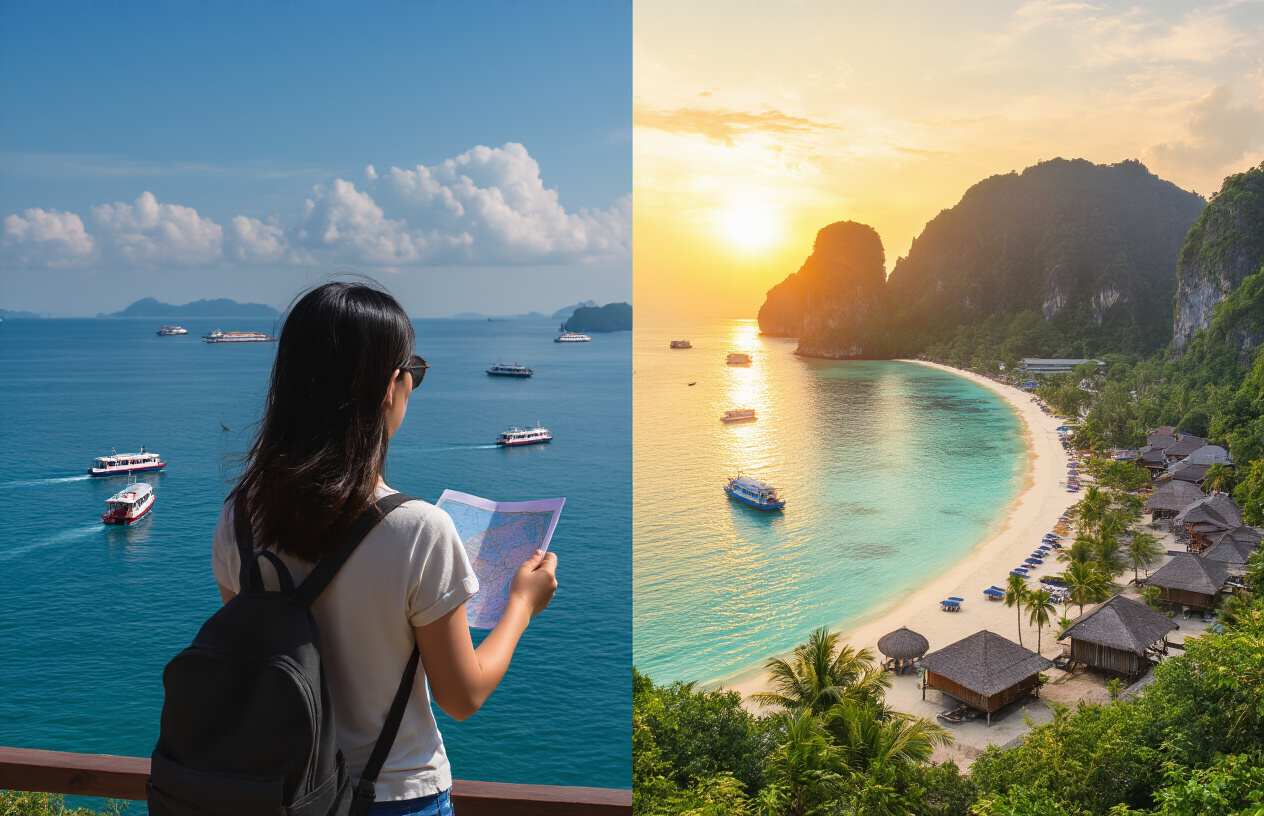
Choosing between Phuket and Phi Phi Islands ultimately depends on what you value most in your Thai vacation. Phuket offers diverse attractions, extensive accommodation options, vibrant nightlife, and convenient accessibility, making it ideal for travelers seeking variety and modern comforts. Meanwhile, Phi Phi Islands deliver that postcard-perfect tropical paradise experience with stunning beaches, crystal-clear waters, and a laid-back atmosphere, though with more limited amenities and higher costs.
For the perfect Thai experience, consider splitting your stay between both destinations. Spend several days enjoying Phuket’s amenities and accessibility before taking a boat to Phi Phi for a few nights of island bliss. This combination allows you to experience the best of both worlds—the convenience and variety of Phuket with the natural beauty and serenity of Phi Phi. Whichever you choose, both destinations offer unforgettable experiences that showcase Thailand’s remarkable coastal charm.

